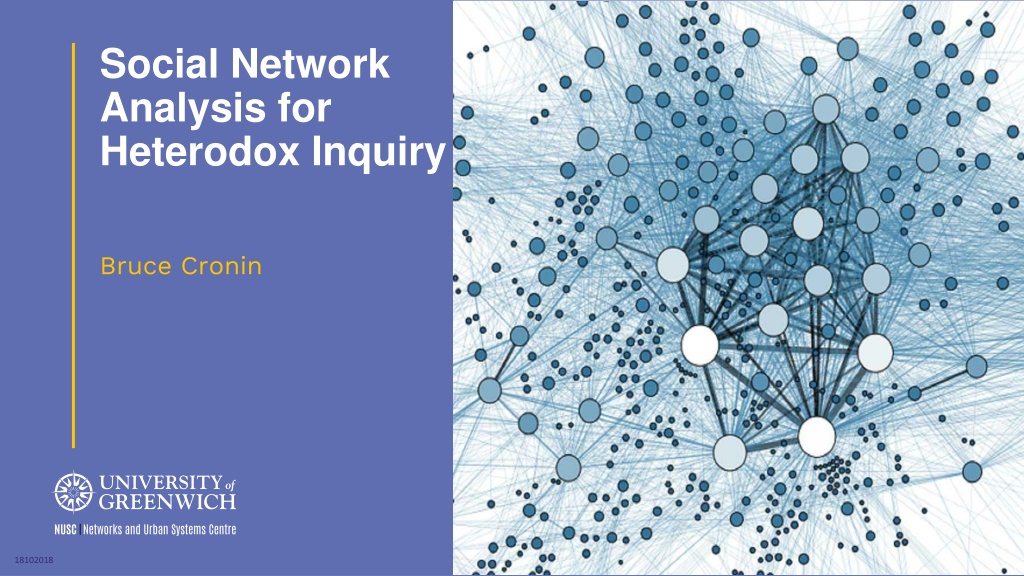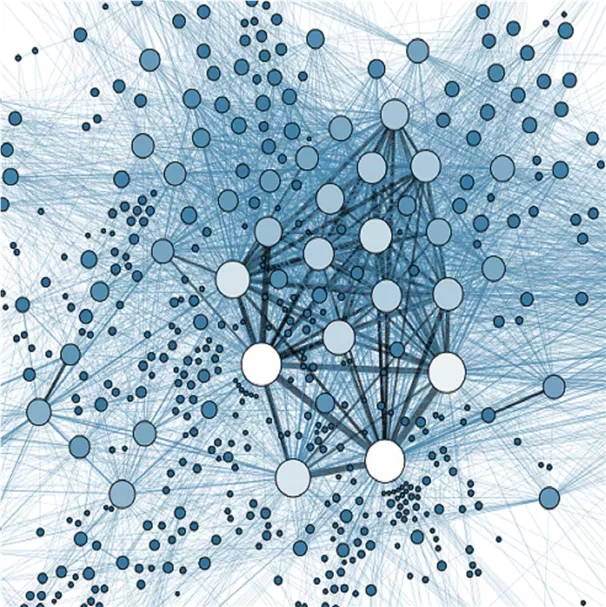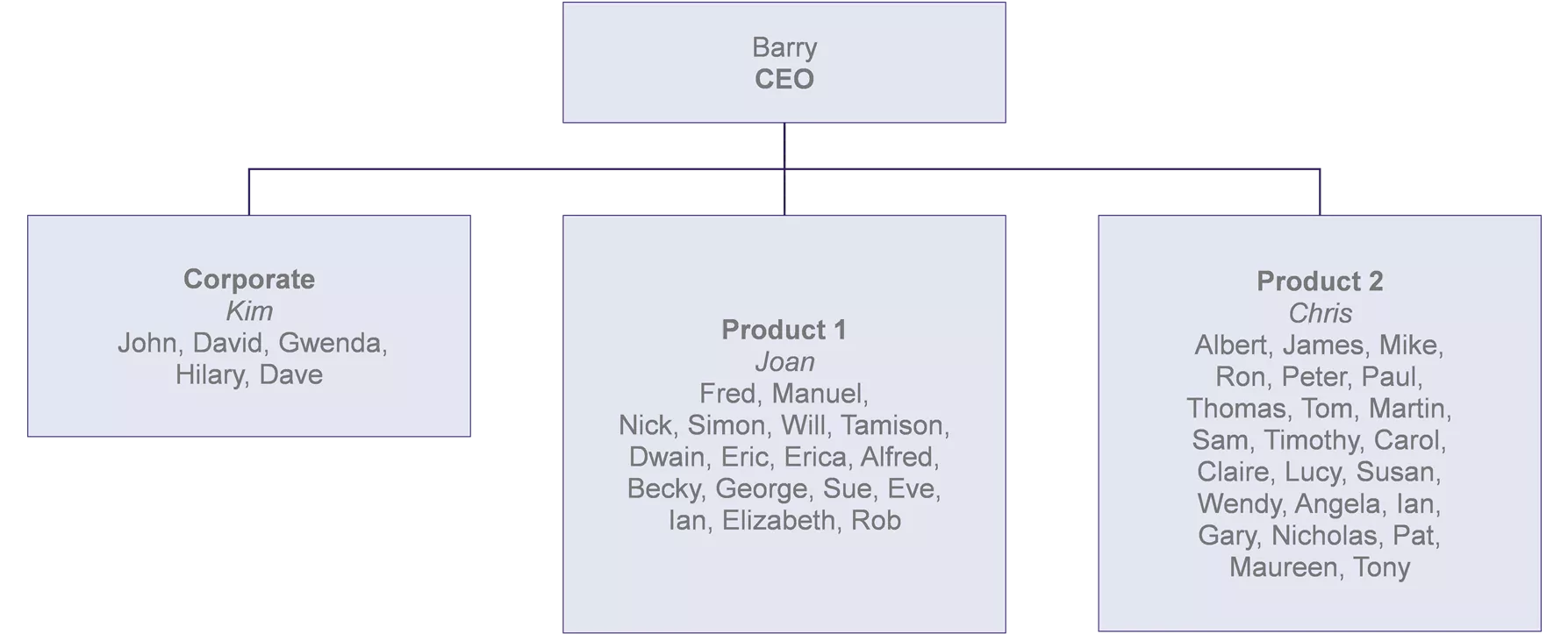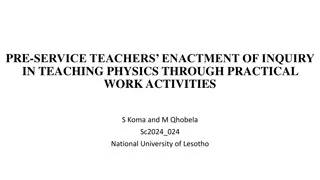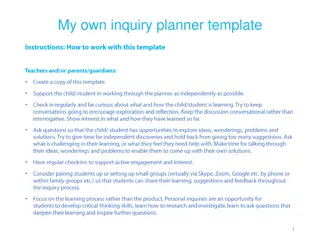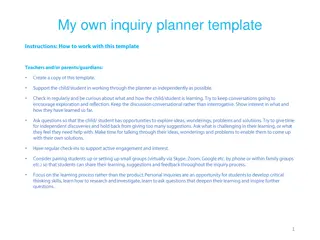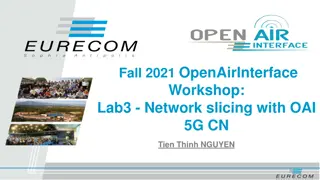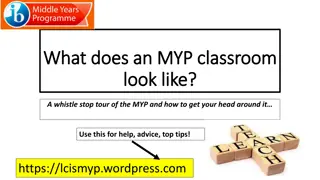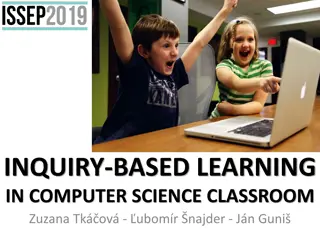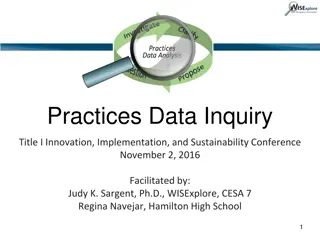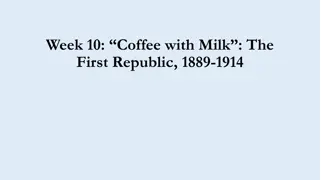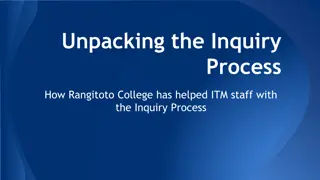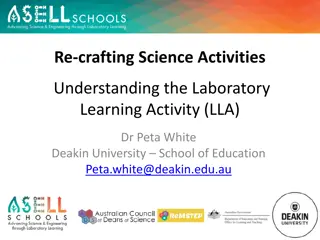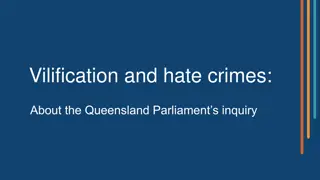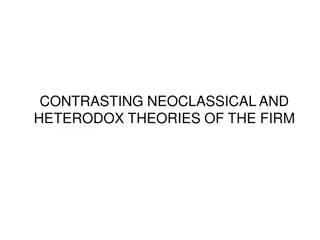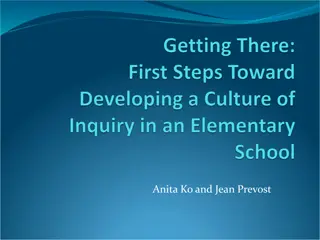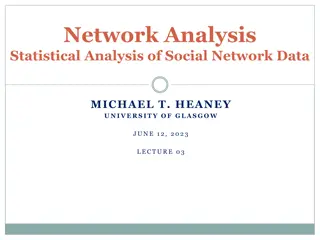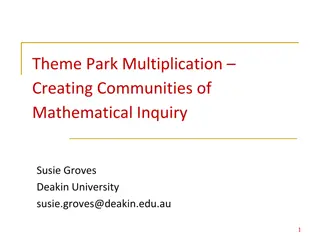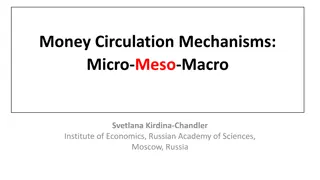Social Network Analysis for Heterodox Inquiry
A comprehensive guide on Social Network Analysis for heterodox inquiry, exploring techniques, terminology, data considerations, economic and socio-economic applications, formal and informal organizational networks, tools for analysis, and data sources. Discover the power of visualizing patterns of interaction among social entities.
Download Presentation

Please find below an Image/Link to download the presentation.
The content on the website is provided AS IS for your information and personal use only. It may not be sold, licensed, or shared on other websites without obtaining consent from the author. Download presentation by click this link. If you encounter any issues during the download, it is possible that the publisher has removed the file from their server.
E N D
Presentation Transcript
Social Network Analysis for Heterodox Inquiry Bruce Cronin
Agenda 1. Introduction to social network analysis 2. Data considerations 3. Economic applications 4. Some network metrics 5. Socio-economic (heterodox) applications 6. Reflection
MSCo - Formal Organisation Barry CEO Corporate Kim Product 2 Chris Albert, James, Mike, Ron, Peter, Paul, Thomas, Tom, Martin, Sam, Timothy, Carol, Claire, Lucy, Susan, Wendy, Angela, Ian, Gary, Nicholas, Pat, Maureen, Tony Product 1 Joan Fred, Manuel, Nick, Simon, Will, Tamison, Dwain, Eric, Erica, Alfred, Becky, George, Sue, Eve, Ian, Elizabeth, Rob John, David, Gwenda, Hilary, Dave
MSCo Informal Network From whom do you obtain information important to do your work?
Social Network Analysis A set of techniques for identifying and representing patterns of interaction among social entities (node, vertex) Provides precise and specific insight in place of intuition and general hunches Graphical: Directional relationship e.g. Provides advice to (arc) Non-directional relationship e.g. Shares an office with (edge) Strength of Relationship e.g. Frequency of contact e.g. Value or importance to the participants
Some Terminology Arc Vertex Edge Node Line/Tie
Where do the Lines Come From? Opinion survey Personal interview. Questionnaire. Web-questionnaire. Observation Email scanning (eg. Tacit, Morphix) Social media logs (FB, LI, Twitter) Open Data Archive APIs. Placement. Management reflection. Experiment.
https://sites.google.com/site/ucinetsoftware Developed by Martin Everett (University of Greenwich) Steve Borgatti (Boston College) Lin Freeman (UC Irvine)
SNA Freeware Netdraw https://sites.google.com/site/netdrawsoftware/download Pajek http://vlado.fmf.uni-lj.si/pub/networks/pajek ORA http://www.casos.cs.cmu.edu/projects/ora Gephi https://gephi.org/ Visone https://visone.ethz.ch/ R-sna http://cran.r-project.org/web/packages/sna NetworkX (python) https://networkx.github.io/
Activity Download Netdraw Open Padgett
Data Collection for SNA Considerations Highly sensitive to response rate. Emerging statistical techniques. Roster - Assess respondent s relationship with each member of organisation listed. Vulnerable to subjective interpretation what is a friend? prompt specific time periods Problems of recall Personal sensitivity
Example Questions Who do you most often discuss personal matters with? Who do you most often spend free time with? Who do you report to? Who is your most promising subordinate? Who are your most valued contacts in the firm? Who is an essential source of buy in? Who is the contact most important to your continued success in the firm? Who is your most difficult contact? With whom would you discuss moving to a new job? Who do you go to so that you can say I ran it by . and they said ? With whom do you discuss issues important to your work? Cross et al. (2001), Burt (2001)
Ethical Considerations Respondent anonymity is not possible because specific personal relationships are the object of study Tom Alice not X - Y Respondents may cite relationships with third parties who may not wish to participate in the study while respondents are reporting their own perception, they are also reporting shared information the fact that a relationship exists
Ethical Considerations Confidentiality is difficult as participants may deduce the identity of individuals from a network position, even when presented anonymously in a sociogram Informed consent is difficult to obtain because the technique is new and participants probably will not fully anticipate the implications of the information they provide
Boundary Definition Participants have different conceptions of group boundaries e.g. close associates Geographic or organisational boundaries may overlook important social relationships. e.g. money flows strongly influenced by government agencies and banks Cut-off points often arbitrary e.g. 100 largest companies Boundary definition based on theoretical significance Completeness important 10% sample = 90% connections missed Radically affects network structure Laumann, Marsden & Prensky (1983)
Sampling Strategies Positional approach Occupants of formally defined positions or groups Problem boundary definition Reputational approach Expert panel - knowledgeable informants Snowballing a few nominate others, who nominate others Problem - Likely to be well-connected by definition Event approach Identify those who participate in significant events Problem event selection, extent of participation Laumann, Marsden & Prensky (1983)
MSCo Informal Network From whom do you obtain information important to do your work?
Make a case for this KM expenditure Cross-group projects Mixed-revenue goals Weekly status calls Weekly email updates Project tracking database Adapted from Cross, R and Parker, A., The Hidden Power of Social Networks, Harvard Business School Press, 2004
Inter-organisational Networks Distributor Retailer Manufacturer Supplier Distributor Retailer Manufacturer Supplier Adapted from Porter (1985)
Alliance Structure of the Global Information Sector 1 BT TI ATT BCE MOTOROLA AOL ERICSSON PHILIPS 0 SUNCISCO MATSUSHITA NOVELL MICROSOFT IBM NTT HP TOSHIBA SONY INTEL ORACLE HITACHI FUJITSU COMPAQ APPLE NEC MITSUBISHI SIEMENS SAMSUNG -1 1 1.5 0 -1 Knoke, Yang & Granados 2002. Dynamics of Strategic Alliance Networks in the Global Information Sector, 1989-2000
Centrality Who is the most Who is the most important person important person in this network? in this network?
Social Capital and Network Position Configuration of social relationships provides leverage for political or economic activity. Social Capital from Cohesiveness Social Capital from Brokerage Centrality Betweenness
Activity Examine the Msco Edgelist.xlsx file In Netdraw, load Msco Edgelist Calculate centrality metrics Visualise different centrality metrics
Activity Examine the Msco Attributes.xlsx file In Netdraw, with Msco Edgelist loaded, load Msco Attributes Calculate centrality metrics Visualise different centrality metrics
Brokerage Roles B B gatekeeper coordinator C C A A B B Itinerant broker C liaison A C A B representative C A B s position varies according to the relationship between a and c
Cliques A sub-set of points where all possible pairs of points are directly connected (maximal and complete). 3 member clique 4 member clique 5 member clique Strong cliques reciprocated connections Weak cliques undirected or unreciprocated connections Scott (1991), Doreian (1979)
Getting a Job Granovetter s (1974) doctoral study under Harrison White, Harvard Job search not a rational calculation of rewards and costs 56% respondents found jobs through informal personal contacts Most important contacts were weak ties ; job change more likely where respondents had more non-family contacts in different occupations. i.e. access to different information. c.f. strong ties ; more likely to hold the same information. Typically one intermediary between employer and respondent; i.e. short weak chains.
Creativity Large Massachusetts electronics firm attempting to retain creativity after a series of acquisitions. 673 supply chain managers asked to write ideas on how to improve business processes. Ideas ranked by senior execs Social network of managers analysed ( who do you most often discuss supply chain issues with ) Highest ranked ideas came from managers with largest no. of contacts outside their immediate work group. R. Burt, 2004 Structural Holes and Good Ideas" American Journal of Sociology, 110(2), 349-399.
Creativity R. Burt, 2004 Structural Holes and Good Ideas" American Journal of Sociology, 110(2), 349-399.
My little crony https://sophieehill.shinyapps.io/my-little-crony/
Ministerial Meetings DoH DfE Ministry of Defence DWP Home Office DCMS Local Government Association DCLG Institute of Directors BIS CBI Trades Union Congress Defra British Chambers of Commerce Barclays Plc Cabinet Office HM Treasury DECC Department of Transport DfID Foreign and Commonwealth office
Meetings with Ministers pay EBITDA marg PE Ratio EV/ EBITDA CF/ORROA Marcap / CF ROE Net ROCE Net EBIT marg ROCE Gross Profit Marg ROA Gross ROE Gross Net 2010-12 0% 14% 19% 26% 41% 83% 820% 21% 23% 32% 194% 264% 540% + Ln Assets - - + - - Interlock C Interlock E Interlock B Meet C Meet E Meet B Obs. Adj. R2 + - + + - + + + + + + + + 17292 2256 3080 3080 4290 2162 4032 3540 3906 3660 4830 4422 4422 0.154 0.192 0.151 0.197 0.248 -0.228 0.119 0.397 0.514 0.388 0.495 0.501 0.484
Fragmentation of UK Director Interlocks 2006 2009 > 500m
11-core of the 2008 RAE publication network University of Exeter Journal of Mathematical Economics University of Manchester Journal of Applied Econometrics Birkbeck College American Economic Review University of York University of Sheffield Brunel University Economic Theory University of Birmingham Economic Journal Queen Mary, University of London European Economic Review University of East Anglia Economics Letters Oxford Economic Papers Journal of Economic Theory Journal of Econometrics The Economic Journal Econometric Theory London School of Economics and Political Science University of Nottingham Economica University of Cambridge University of Warwick Oxford Bulletin of Economics and Statistics University Of Oxford University Of Edinburgh University College London Journal of Public Economics Journal of Economic Dynamics and Control University of Surrey University of Essex Royal Holloway, University of London Journal of Development Economics University of Leicester International Economic Review International Journal of Industrial Organization Review of Economic Studies Review of Economics and Statistics University of Glasgow University of St Andrews University of Southampton Games and Economic Behavior Econometrica
Heterodox Economic Journals RPE JEI CJE NLR IRAE JPKE RORPE CC ROAPE RM ROSE RBPE ME FE ROPE RIPE CNS CPE ES SS
Journal Network Quality Score (JNQS) = [EC] + [BC] + ([C] + [I] + [G])/3 + ([R] + [L])/2 (EC) concentrations of specialised knowledge within a discipline (BC) demonstrates integration (C) coordinator (I) itinerant broker and (G) gatekeeper roles internally oriented (R) representative and (L) liaison roles externally oriented
Heterodox Economic Journal Rankings Bibliometric Ranking Social Network Ranking Total Citation Ranking Peer Final Ranking HJQS (Z Score) Journal Name Type of Journal Evaluation Ranking General 24 2 5 1 Cambridge Journal of Economics 1 0.5419 (3.43) General 5 19 6 3 2 Journal of Economic Issues Journal of Post Keynesian Economics Review of Radical Political Economics 0.4412 (2.32) General 18 30 23 2 3 0.3931 (1.79) General 14 15 8 4 4 0.3802 (1.65) Interdisciplinary 9 7 4 13 5 Economy and Society 0.3521 (1.34) Lee, F., Cronin, B., McConnell, S. and Dean, E. (2010). Research quality rankings of heterodox economic journals in a contested discipline. American Journal of Economics and Sociology, 69(5), 1409-52.
Reflection What are the main pros and cons of social network analysis (SNA) as a method? In what ways does SNA reflect the ontological concerns discussed elsewhere in the workshop? How might you use SNA in your own work?
